Deep M6.4 earthquake hits New Ireland region, Papua New Guinea
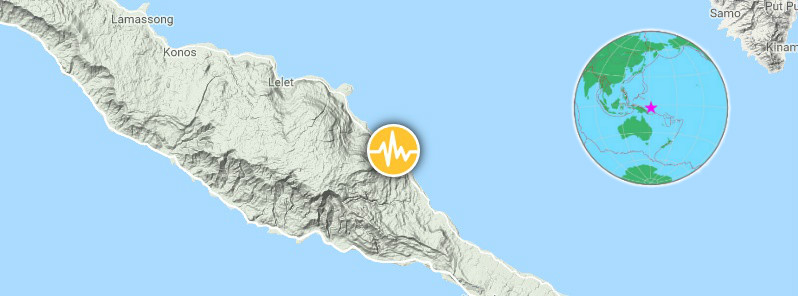
A deep earthquake registered by the USGS as M6.4 hit New Ireland region of Papua New Guinea at 14:35 UTC on February 17, 2019. The agency is reporting a depth of 367.9 km (228.5 miles). EMSC is reporting M6.5 at a depth of 375 km (233 miles).
The epicenter was located 90.3 km (56.1 miles) N of Rabaul (population 8 074), 108.3 km (67.3 miles) N of Kokopo (population 26 273) and 170 km (105.6 miles) ESE of Kavieng (population 14 490), Papua New Guinea.
There are 120 000 people living within 100 km (62 miles).
1 099 000 people are estimated to have felt weak shaking.
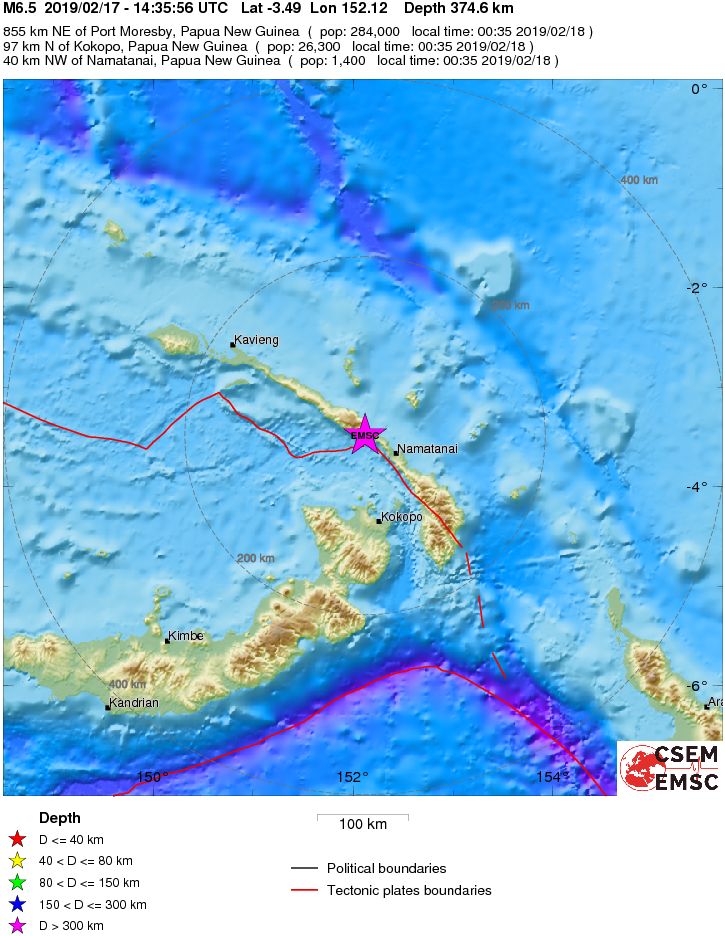
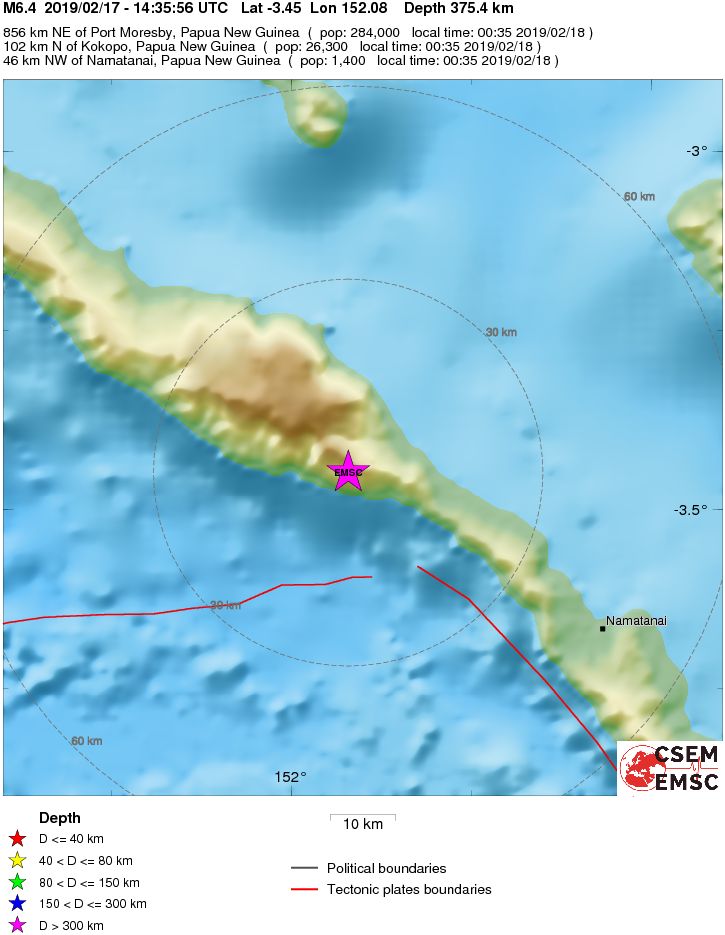
The USGS issued a green alert for shaking-related fatalities and economic losses. There is a low likelihood of casualties and damage.
Overall, the population in this region resides in structures that are vulnerable to earthquake shaking, though resistant structures exist. The predominant vulnerable building types are mud wall and informal (metal, timber, GI etc.) construction.
Recent earthquakes in this area have caused secondary hazards such as landslides that might have contributed to losses.
Estimated population exposure to earthquake shaking
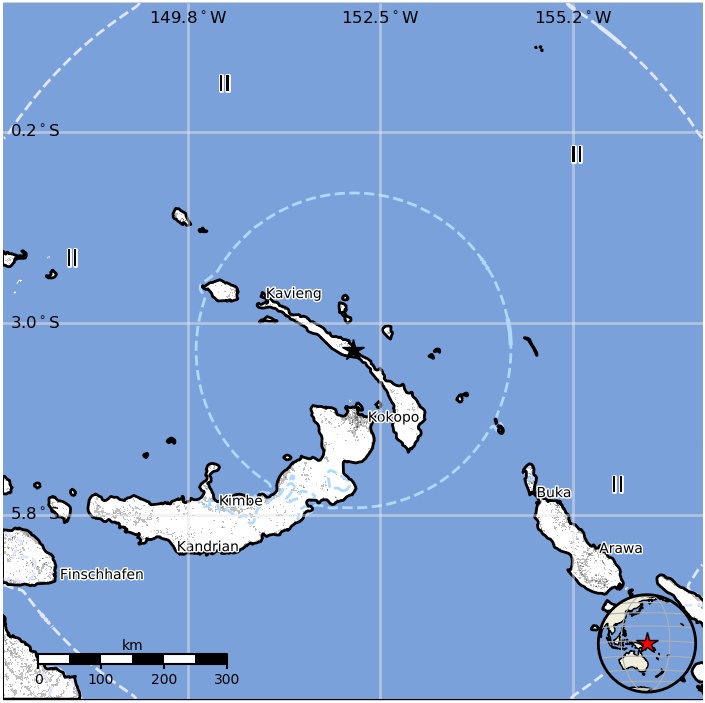
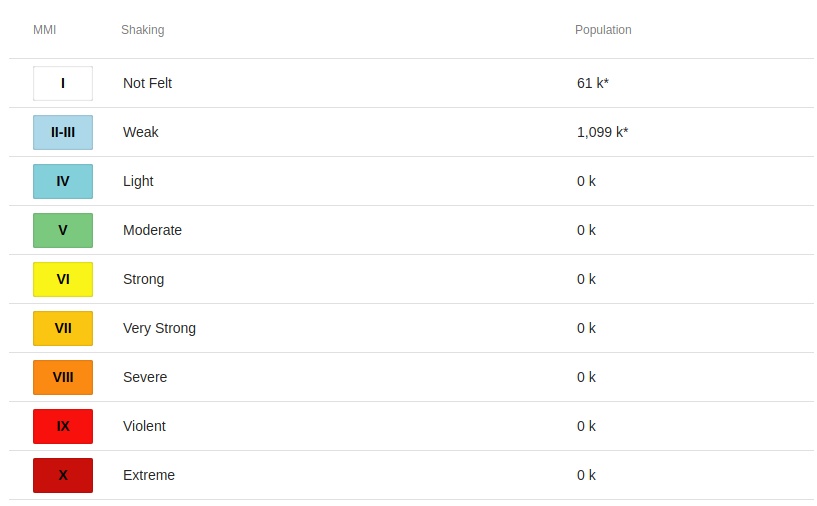
Selected cities exposed
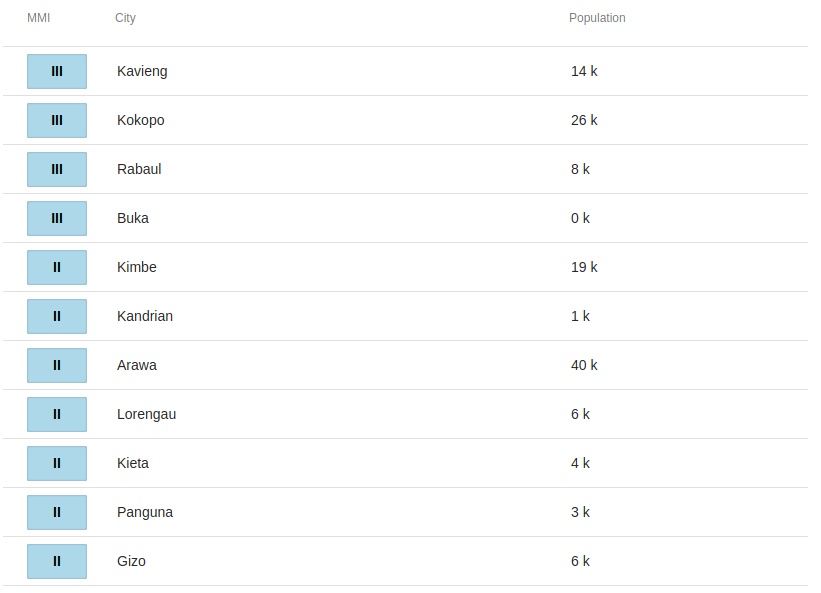
Regional seismicity
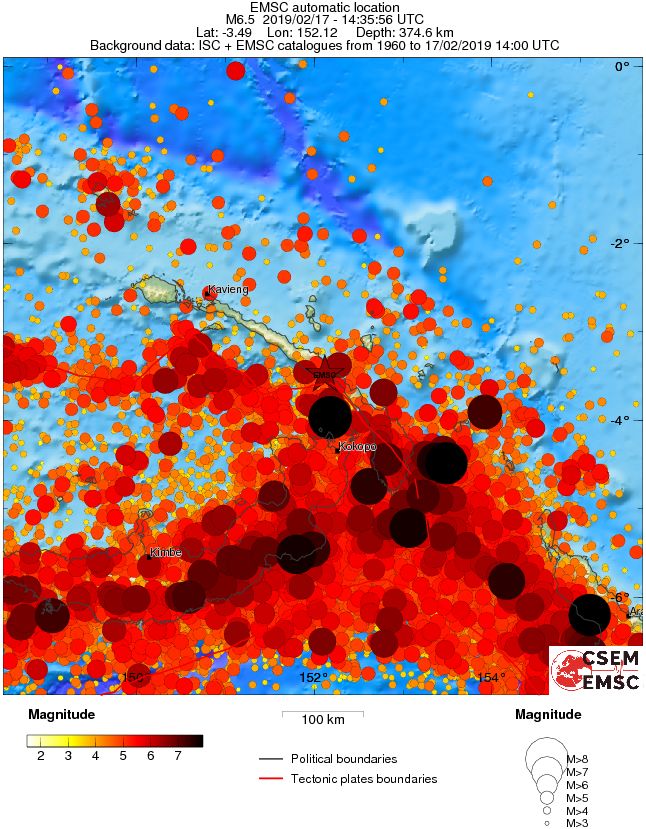
Featured image credit: Google, EMSC, TW/SAM

Commenting rules and guidelines
We value the thoughts and opinions of our readers and welcome healthy discussions on our website. In order to maintain a respectful and positive community, we ask that all commenters follow these rules.